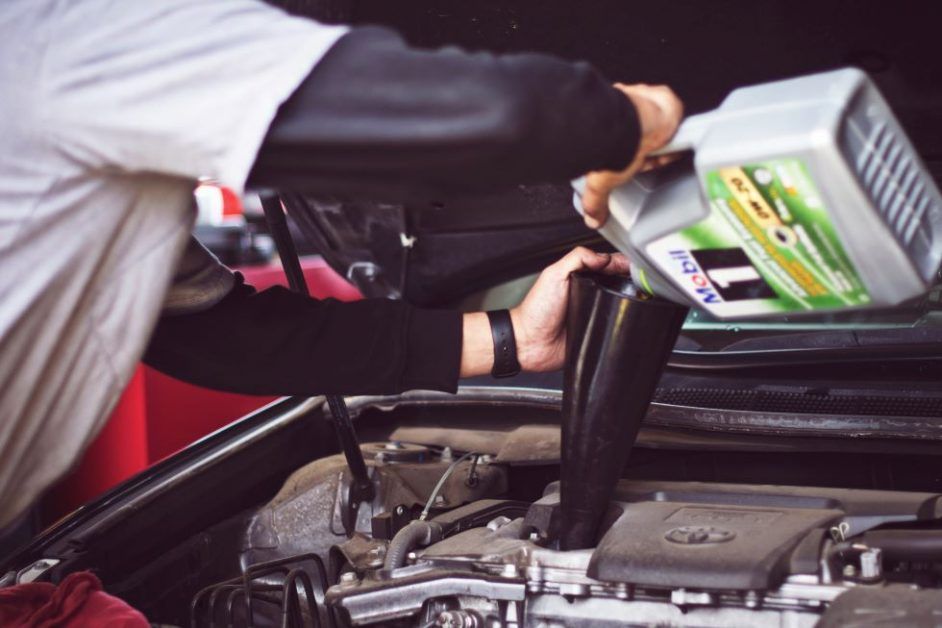Most car owners would love to save money on maintenance and repairs. But unless you’ve worked as a mechanic or have an affinity for fixing up cars, chances are you don’t know how.
The good news is that anyone can dramatically cut back on car maintenance expenses and avoid costly repairs by monitoring the fluids in their vehicle. Ideally, most or all of these should be checked every several thousand miles. By staying on top of your car fluid levels and getting them topped off when needed, you can ensure you’ll get the longest and highest quality lifespan out of your ride.
In this article, we’ll highlight the 5 most important fluids that not only keep you driving safely but, more importantly, that keep money in your pocket.
First thing’s first — read the list below to see if you’re familiar with all of these car fluids. If even one looks new to you, it may be time for a refresher course in auto maintenance.
Overview of Essential Car Fluids:
- Oil
- Windshield Washer Fluid
- Power Steering Fluid
- Transmission Fluid
- Brake Fluid
Engine Oil
Oil is the primary lubricator of all moving parts in a vehicle engine. It’s responsible for keeping the “joints” of the engine in healthy, supple condition. Oil ensures that the internal parts of the engine don’t rub or grind against one another. It also keeps the machine metal cool, preventing overheating. Best of all, regularly changing your oil will maximize the efficiency of your car’s gas mileage.
Know The Flow
Because it’s relatively straightforward, changing oil is usually the first car maintenance procedure that drivers learn. Although every vehicle is slightly different, most models will have an oil filter under the hood. Once you’ve located the filter (and plug, if there is one), you’ll need to check the level of oil. If the dipstick indicates that it’s running low — your owner’s manual will explain how to tell — it’s time to take your car in for an oil change.
Note: Some foreign and European cars may not come with an oil dipstick. If this is the case, your owner’s manual or local car specialist can help you complete the fluid change process.
Windshield Washer Fluid
The name alone tells you why this fluid is important: if your windshield isn’t clean, you can’t see through it, and if you can’t see, you’re bound to get in an accident. It shouldn’t be too hard to find the tank either; most vehicles will have a labeled cap or lid. Usually you can tell whether it’s running low simply by looking from the outside, since the tanks tend to be made of an opaque material.
Know The Flow
If you think you can save some money by mixing soap and water into a cleaning fluid, don’t try it. Be sure to buy a washer fluid specifically designed for cleaning windshields. As effective as household ingredients can be, they won’t remove splattered bugs and exterior gunk like a specially designed washer fluid does.
Power Steering Fluid
Important but often underappreciated, power steering is the collection of hydraulic mechanisms in your car responsible for seamless steering and impeccable parking. If this fluid runs low, there’s a very scary chance you could lose control of the vehicle. Like most critical car parts, the power steering fluid will be found under the hood, with an explanatory label similar to the washer fluid tank.
Know The Flow
If your power steering fluid has run low, it’s pretty easy to refill yourself. However, if the fluid starts to run out faster than usual, you may have a crack or a leak. In that case, you’ll want to visit a specialist who can order the right replacement parts and install them for you.
Transmission Fluid
Unless you drive a stick-shift, your car is likely to use transmission fluid. This is what helps you transition smoothly from one gear to another. Failure to maintain or replace this fluid will cause your gears to shift less effectively and may even cause them to shift on their own– yikes!
Know The Flow
There are dozens of modern brands and varieties of transmission fluid, and most are specifically tailored to a certain manufacturer, model, or mileage range. Check with the manual or a professional at your local car service station to figure out which transmission fluid is recommended for your vehicle.
Brake Fluid
If you’ve been driving for a while, you know that human reflexes aren’t always responsive enough to avoid running the occasional red light or stop sign. Among other safety reasons, that’s why high-performance brakes are so important in a quality vehicle. If your brake fluid runs low, however, you not only risk losing effectiveness in your brakes, but you may crash into another driver.
Know The Flow
Because brake fluid has some particular qualities that need to be monitored, an above-average degree of mechanical knowledge is needed to maintain the contents of the tank. For instance, if brake fluid runs out completely before being replaced, you’ll need to “bleed” the entire system. Likewise, a seemingly simple discoloration in the fluid may indicate need of a total replacement, which is best handled by a service professional with the proper equipment and precautionary tools.
Conclusion
Car maintenance is a lot of work. But it doesn’t have to rule your life. You can easily avoid an unwanted breakdown or accident by regularly checking your car fluid levels, ideally between every 3,000-5,000 miles of driving.
If you don’t have the tools, supplies, or self-assurance to check levels and make fluid replacements on your own, have no fear. The team of qualified, experienced professionals at FC Foreign Car Service are here to help with all of your car fluid maintenance needs.Give us a call or visit our website today to learn why we’re so much more than “an auto repair shop near you.”

